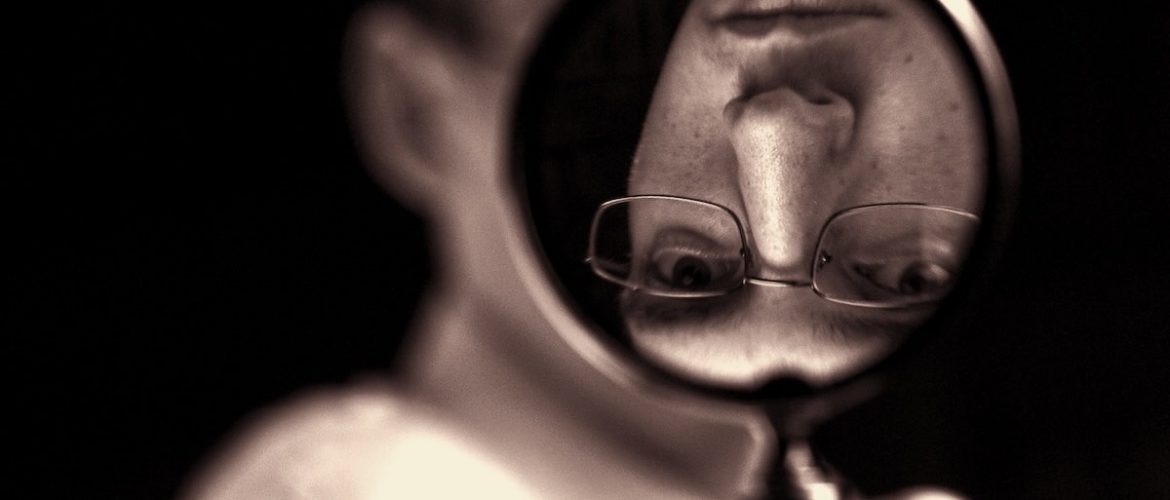New Earth tools #10 – Self-observation
- April 8, 2022
- Posted by: Michael Hallett
- Category: New Earth tools

Most of the tools in this series are just like tools in a mechanics’ toolbox. You get them out when you need them to perform a specific task.
In the next couple of articles, I’d like to discuss some tools that have a more general use. They’re like some of the things mechanics use in a garages—oil, drip-trays, manuals; the cloths they wipe their hands on without even thinking about it.
The first of these tools is self-observation: the ability to observe one’s own behaviour. You might think that we all do this innately, all of the time. Actually we don’t. Whenever we are acting out from some unconscious trigger, we are completely oblivious of it. (The clue is in the word ‘unconscious’.)
We do or say whatever stupid or damaging bit of behaviour it is and even if someone tells it straight to our faces we still don’t get it. We go into denial and repeat the process every time that particular trigger is activated.
Jesus refers to this in Matthew 7:3. “You can see the speck in your friend’s eye, but you don’t notice the log in your own eye.” You can observe the faults of others, but not your own.
Coal miner’s helmets
Jesus repeatedly uses the analogy of blindness to refer to a lack of self-observation, particularly among the Pharisees. “Stay away from those Pharisees! They are like blind people leading other blind people, and all of them will fall into a ditch.” (Matthew 15:14)
Embodiment strips away our ability to keep acting out from the unconscious. One of the components of this is self-observation. The more you develop your powers of self-observation, the sooner you’ll clear all that junk in your unconscious and the faster you’ll evolve to the next level.
(Conscious embodiment can be understood as the process of emptying the unconscious into the conscious; a ‘fully conscious individual’, by definition, has no unconscious.)
To strengthen your self-observation, simply be aware of it and intend to develop it. Imagine it’s like one of those coal miner’s helmets with the light on top. Switch it on and leave it on.
After a while you’ll notice that your ‘inner observer’ comes into play. Your inner observer is cool and detached. It notices patterns of dysfunctional behaviour both in you and in others.
Your inner observer is cool and detached. It notices patterns of dysfunctional behaviour both in you and in others.
In The Power of Now, Eckhart Tolle calls this ‘watching the thinker’: “The moment you start watching the thinker, a higher level of consciousness becomes activated.”
Real time
Initially we may only realise we’ve done something less than healthy after the fact: “Oh, duh, I did such-and-such again.”
As we strengthen our self-observation, it shifts into real time. We can see and feel ourselves acting out from a damaged place in our psyche even if we are—in that moment—powerless to stop it. And, even for experienced practitioners, there can be times when our inner observer goes offline when we are immersed in something particularly deep or hit a ‘blind spot’—a place inside ourselves that is badly wounded, immature or underdeveloped.
Jesus uses the analogy of the inside and outside of a cup to express self-observation. When we can see inside, we see our blind spots and clean the cup. “You Pharisees and teachers are show-offs, and you’re in for trouble! You wash the outside of your cups and dishes, while inside there is nothing but greed and selfishness.” (Matthew 23:25)
Once you have identified an issue within yourself, you can get out the other tools described in this series and do the inner work of clearing the damage. This starts with acceptance, which I wrote about in the last post.
No time to rest, though—once one issue is cleared you need your inner observer back on the job as another issue is likely to follow!
